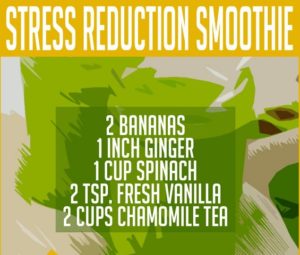by Susan Dean | Feb 2, 2018 | Health, Kitchen Recipes, Medicinal Recipes
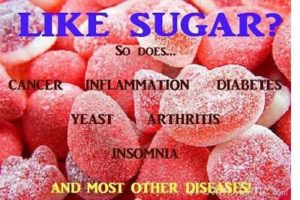 These Foods Make Cancer Cells Grow in Your Body! Avoiding these foods will help you live healthier and longer.
These Foods Make Cancer Cells Grow in Your Body! Avoiding these foods will help you live healthier and longer.
Red Meat – Red meat is one of the major causes of colon cancer. According to research which followed 150,000 people the ages of 50 and 74, a long-term consumption of red meat increased the amount of colon malignancy in the subjects.
Refined Sugars – Otto Warburg, the winner of the Nobel Prize in medicine (1931), found that cancer and tumors use sugars to feed themselves. Sugars makes the cancer cells grow in size, which in turn increases the number of cancer patients. Refined sugars increase insulin levels.
Potato Chips are high in fat and calories. They contain coloring agents, artificial flavors, and additives. When fried on high temperatures in order to look firm, a substance called acrylamide forms. This substance is carcinogenic and is also found in cigarette smoke.
GMO`s – genetically modified organisms are grown and modified with chemicals, which makes them harmful for the overall health.
Foods Highly Salted, Pickled or Smoked – These foods contain preservatives and other chemicals. When smoked, the food loses its nutritional value and its natural compounds. Tar is known as cancer-causing agent. Salami, sausage, bologna, bacon, and other types of meat are high in fat and salt.
Microwave Popcorn contains propyl gallate, a chemical which causes stomach issues and skin rashes. It contains soybean oil, a GMO product, and other types of additives.
Soda Pop – It has been scientifically shown that people who consume more than one soda daily are at increased risk of stroke compared to people who don’t consume soda at all. Soda drinks are high in sugar and calories.
Processed Meats contain many chemicals, additives, and sodium nitrates which make them look fresh and appealing.
Farmed Salmon – Even though fish is one of the healthiest foods available, farmed salmon is definitely something you need to avoid. Unlike wild salmon, the fresh salmon is contaminated with various antibiotics, pesticides, chemicals, and other cancer-causing agents. When buying salmon, avoid the red-colored one because that isn’t its natural color.
Canned Tomatoes – Canned foods, including tomatoes, contain a chemical called Bishpenol –A or BPA and it is recommended to avoid them.
by Susan Dean | Feb 2, 2018 | Health, Kitchen Recipes, Medicinal Recipes
Celery and cancer
Celery is the ideal addition to a healthy cancer-free lifestyle. Celery contains compounds that help repel cancer cells. Celery contains apigenin and luteolin, bioactive flavonoids that fight cancer cells. The apigenin component of celery fights cancer cells by inducing apoptosis (programmed cell death). It is traditionally used in Chinese medicine to treat gout and some arthritic conditions. It is a powerful anti-inflammatory compound rivaling commercial anti-inflammatory drugs. Luteolin has the capacity to short-circuit the replication cycle of cancer cells. Luteolin is able to block the signal pathways (IGF and PI3K) necessary for the growth of cancer cells, specifically colorectal cancers. Luteolin also possesses strong anti-inflammatory properties.
Other Health Benefits of Celery
Celery is rich in vitamins and minerals such as: A, C, K, folate, molybdenum, potassium, fiber, and other healthy components.
Replaces lost electrolytes. This water-loaded veggie is a superb post workout drink that replaces electrolytes in your body. It is a rich source of potassium and sodium, giving it a mild salty taste.
Balances your pH levels. Celery is one of several natural alkaline-forming foods. Eating celery reduces your body’s acid levels, helping you to maintain a balanced pH. If your pH level is too acidic, it can stimulate the growth of cancer cells. Cancer cells thrive in an acidic environment.
Lowers cholesterol and blood pressure. Celery is a good source of fiber that helps lower cholesterol levels by “sweeping” the cholesterol in the bloodstream. Celery contains pthalides, a substance that stimulates the secretion of bile juices that reduce LDL cholesterol. The pthalides relax the arterial wall and dilate the blood vessels, allowing blood to flow without interruption.
Prevents constipation. Since celery contains fiber, it helps prevent constipation. A cup of celery in your meal or snack can yield around 2 grams of fiber plus 97 grams of water content.
Improves kidney function. Celery has diuretic and cleansing properties that improve kidney function. Regular and frequent urination helps eliminate toxins within the body and prevent the formation of kidney stones.
Treats nervous disorders. Dating back to Hippocrates, celery has been used to treat nervous disorders. If you suffer from insomnia or anxiety, a cup of celery juice provides a soothing and calming effect on your nerves.

New Lime Compounds
Kill 64% of Colon Cancer Cells in Vitro: Three newly discovered compounds in common limes (Citrus aurantifolia) were extracted from lime peels and found to kill up to 64% of human colon cancer cells (SW480) in vitro after 24 hours of treatment. The compounds induced cell cycle arrest and programmed cell death (apoptosis) in the cancer cells.
This latest discovery adds to a long list of potent anti-cancer compounds that citrus fruit are already known to contain, such as flavonoids, limonoids, beta-cryptoxanthin, quercetin, and D-limonene. Citrus fruit is now a well-established cancer fighter. Past studies have shown that eating just 4 servings of citrus weekly may reduce colon cancer risk by 18%, and the risk reductions for other GI tract cancers were much more impressive: 58% less risk for throat cancer, 53% less risk for mouth and pharyngeal cancers, and 31% less risk for stomach cancer. Women consuming the most citrus may also experience 10% less breast cancer risk. Beware that commercial citrus juices may contain much less of the beneficial compounds due to processing methods used. Eating fresh, organic fruit (or freshly prepared juice, rich in pulp) is always the method of choice.

Artemisinin / Sweet wormwood Artemisia Annua
This recent research was published in Life Science and involved the herb, commonly used in Chinese medicine, artemisinin which is a “Sweet wormwood” plant or “Artemisia Annua” derivative.
When mixed with iron, researchers found that, within 16 hours, 98% of the cancer cells were killed. It was effective across all types of cancers. Artemisinin has been used in the past as a powerful anti-malarial herb, but this study was specifically exploring its action against cancer.
Mixing with iron seems to be the key point, as when the artemisinin was used in isolation there was only a 28% reduction in cancer cells. So when the patients in this study were given an iron supplement (which often accumulates in breast tissue, but especially so in cancerous cells), the artemisinin was effectively able to target ‘bad’ cells and leave ‘good’ cells alone.
The report concluded that “In general, our results show that artemisinin stops ‘E2F1′ transcription factor and intervenes in destruction of lung cancer cells, meaning it presents a transcription way according to which artemisin controls reproductive cancer cell growth”,
“This looks very promising,” says Gary Poser, an organic chemist at Johns Hopkins University in Baltimore, Maryland – this could be a huge breakthrough.
Artemisinin is a compound derived from Wormwood and has been the subject of much research and has shown promise as an anti-malaria agent. It is now well established to have anti-proliferative and apoptotic (killing) effects on a number of cancer cell types.
Artemisia annua was first noted as a possible anticancer herb in 2001, when two researchers at the University of Washington learned that wormwood showed highly selective activity against breast cancer cells. “Artemisinin reacts with iron to form free radicals that kill cells. Since cancer cells uptake relatively large amount of iron than normal cells, they are more susceptible to the toxic effect of artemisinin.” The anticancer effect of artemisinin is thus much enhanced (up to 100x) by the preloading of cancer cells with iron.
Recent scientific research conducted at the Cancer Research Laboratory, University of California (Berkeley) has found that Artemisinin, a compound found in Artemisia, induced a growth arrest of tumorigenic human breast cancer cell lines with preneoplastic and late stage cancer phenotypes, but failed to arrest the growth of a nontumorigenic human mammary cell line.
Artemisinin killed the breast cancer cells without harming the healthy cells. This is exactly the kind of effect that researchers are looking for – because one of the greatest challenges of modern cancer research is to develop effective anti-cancer agents that don’t harm healthy cells. It is thought that hyperbaric oxygen therapy could further enhance the anticancer effects of artemisin.
Artemisinin is one of the more promising anticancer herbs we have come across and worthy of due consideration not only by naturopaths but also by orthodox medicine. Artemisinin is sometimes being used as supplementation as an adjunct to chemotherapy. A comment from a lady whose husband had lung cancer:
“My husband was diagnosed with lung cancer, it filled the left lung and it was wrapped around his spinal cord and too close to a main artery and esophagus to operate. It also got into the Lymph system. The doctors were surprised that he wasn’t paralyzed since the cancer had crushed and cracked the spinal cord. I gave him Artemisinin capsules for four days at the beginning of the treatments with radiation and chemo. After six weeks he was cancer free and stayed that way. An amazing recovery.“ The medical staff said, “We don’t see that very often.”
AFTER YEARS OF TELLING PEOPLE CHEMOTHERAPY IS THE ONLY WAY TO TRY AND ELIMINATE CANCER, JOHNS HOPKINS IS FINALLY STARTING TO TELL YOU THERE IS AN ALTERNATIVE WAY …
1. Every person has cancer cells in the body. These cancer cells do not show up in the standard tests until they have multiplied to a few billion. When doctors tell cancer patients that there are no more cancer cells in their bodies after treatment, it just means the tests are unable to detect the cancer cells because they have not reached the detectable size.
2. Cancer cells occur between 6 to more than 10 times in a person’s lifetime.
3. When the person’s immune system is strong the cancer cells will be destroyed and prevented from multiplying and forming tumors.
4. When a person has cancer it indicates the person has multiple nutritional deficiencies. These could be due to genetic, environmental, food and lifestyle factors.
5. To overcome the multiple nutritional deficiencies, changing diet and including supplements will strengthen the immune system.
6. Chemotherapy involves poisoning the rapidly-growing cancer cells and also destroys rapidly-growing healthy cells in the bone marrow, gastrointestinal tract etc, and can cause organ damage, like liver, kidneys, heart, lungs etc.
7. Radiation while destroying cancer cells also burns, scars and damages healthy cells, tissues and organs.
8. Initial treatment with chemotherapy and radiation will often reduce tumor size. However prolonged use of chemotherapy and radiation do not result in more tumor destruction.
9. When the body has too much toxic burden from chemotherapy and radiation the immune system is either compromised or destroyed, hence the person can succumb to various kinds of infections and complications.
10. Chemotherapy and radiation can cause cancer cells to mutate and become resistant and difficult to destroy. Surgery can also cause cancer cells to spread to other sites.
11. An effective way to battle cancer is to STARVE the cancer cells by not feeding it with foods it needs to multiple.
12. Meat protein is difficult to digest and requires a lot of digestive enzymes. Undigested meat remaining in the intestines will become petrified and leads to more toxic buildup.
13. Cancer cell walls have a tough protein covering. By refraining from or eating less meat it frees more enzymes to attack the protein walls of cancer cells and allows the body’s killer cells to destroy the cancer cells.
14. Some supplements build up the immune system (IP6, Flor-ssence, Essiac, anti-oxidants, vitamins, minerals, EFAs etc.) to enable the body’s own killer cells to destroy cancer cells. Other supplements like vitamin E are known to cause apoptosis, or programmed cell death, the body’s normal method of disposing of damaged, unwanted, or unneeded cells.
15. Cancer is a disease of the mind, body, and spirit. A proactive and positive spirit will help the cancer warrior be a survivor.
Anger, unforgiving and bitterness put the body into a stressful and acidic environment. Learn to have a loving and forgiving spirit. Learn to relax and enjoy life.
16. Cancer cells cannot thrive in an oxygenated environment. Exercising daily, and deep breathing help to get more oxygen down to the cellular level. Oxygen therapy is another means employed to destroy cancer cells.
What cancer cells feed on:
a. Sugar is a cancer-feeder. By cutting off sugar it cuts off one important food supply to the cancer cells. Note: Sugar substitutes like NutraSweet, Equal, Spoonful, etc are made with Aspartame and it is harmful. A better natural substitute would be Manuka honey or molasses but only in very small amounts. Table salt has a chemical added to make it white in color. Better alternative is Bragg’s aminos or sea salt.
b. Milk causes the body to produce mucus, especially in the gastrointestinal tract. Cancer feeds on mucus. By cutting off milk and substituting with unsweetened soy milk, cancer cells will starved.
c. Cancer cells thrive in an acid environment. A meat-based diet is acidic and it is best to eat fish, and a little chicken rather than beef or pork. Meat also contains livestock antibiotics, growth hormones and parasites, which are all harmful, especially to people with cancer.
d. A diet made of 80% fresh vegetables and juice, whole grains, seeds, nuts and a little fruits help put the body into an alkaline environment. About 20% can be from cooked food including beans. Fresh vegetable juices provide live enzymes that are easily absorbed and reach down to cellular levels within 15 minutes t o nourish and enhance growth of healthy cells.
To obtain live enzymes for building healthy cells try and drink fresh vegetable juice (most vegetables including bean sprouts) and eat some raw vegetables 2 or 3 times a day. Enzymes are destroyed at temperatures of 104 degrees F (40 degrees C).
e. Avoid coffee, tea, and chocolate, which have high caffeine. Green tea is a better alternative and has cancer-fighting properties. Water–best to drink purified water, or filtered, to avoid known toxins and heavy metals in tap water. Distilled water is acidic, avoid it.
Preventing Cancer
If you want to prevent the development of cancer, you have to oppose the acidity of your body, creating alkaline conditions. This recipe consists of lemon and baking soda.
Lemon has strong anti-cancer properties. It has a solid impact on cysts and tumors and annihilates the cancer-causing cells of 12 distinct sorts of cancers. Lemon has 10 000 times more grounded impact than the medications or chemotherapy and has an exceptionally solid anti microbial impact with an extremely wide range of action against bacterial and contagious diseases.
Lemon is effective against internal parasites and worms, regulates blood pressure and is a powerful antidepressant, and reduces stress. Lemon contains vitamin C, vitamin B, riboflavin, and minerals such as potassium, calcium, phosphorus, and magnesium.
By including baking soda, you will effectively diminish the acidity of the body. The disease cells can’t develop in an alkaline domain. Lemons have a strong anticancer effect. They destroy the malignant cells of 12 types of cancer, including colon, breast, prostate, lung and pancreas. When the baking soda is added to the lemon, the effect is even greater because it completely changes the pH levels of the body.
– 240ml of distilled water
– 1 teaspoon of baking soda
– Juice of 1 lemon
Mix the ingredients, and drink this beverage on an empty stomach. You have to make this recipe at least three times a day. The patient should drink the lemon juice with a teaspoon of baking soda. Ensure the lemon is organic without chemicals. Natural lemon is 100 times more productive than lemon developed with manures and splashed with chemicals.


















by Susan Dean | Feb 2, 2018 | Health, Kitchen Recipes, Medicinal Recipes
“Stress is wanting something to be the way it isn’t.” – Eckhart Tolle

Everybody feels stress and knows it intimately, but very few of us think about what stress actually is. Stress is a thought. That’s it. No more, no less. If that’s true, then we have complete control over stress, because it’s not something that happens to us but something that happens in us.
The dictionary definition of stress is, “bodily or mental tension resulting from factors that tend to alter an existent equilibrium.” It is your thoughts out of balance.
The medical definition of stress is, “the perception of a real or imagined threat to your body or your ego.” It could be a tiger chasing you or your belief that your spouse is mad at you (even if he or she is not). Whether it is real or imagined, when you perceive something as stressful, it creates the same response in the body.
A cascade of adrenaline, cortisol, and other stress hormones floods your system, raising your heart rate, increasing your blood pressure, making your blood more likely to clot, damaging your brain’s memory center, increasing belly fat storage, and generally wreaking havoc on your body.
The operative word here about stress is that it is a perception, also known as a thought or point of view. There are objective stressors, to be sure — war, death of loved ones, financial troubles, starvation, dental work. But how these affect us determines our body’s stress response. Imagine Woody Allen and James Bond, each with a gun pointed at his head — same external stressor but entirely different responses.
When I was very sick with chronic fatigue, barely able to work, a single father with two kids, thinking I had to go on disability, I worried constantly. I couldn’t sleep, and everything seemed stressful. Then, a wise man told me I had to stop worrying. I argued with him strenuously, providing a comprehensive list of all the real external events that were stressful to me. He just kept repeating that worrying was toxic; he said what really mattered was how I viewed the situation, and he kept telling me I just needed to stop worrying.
And slowly, very slowly, I trained myself to watch my thoughts, my perceptions, and when a stressful thought came into my head, I stopped, took a deep breath, and just let go. It’s like a muscle — it gets stronger the more you use it, but if you let go, it relaxes.
But of course, life takes over and things happen, all the “Ds” — divorce, death, deadlines, demands, dumb thoughts, and dumb schedules. And as anyone does, I get sucked in to negative thinking, which creates stress in my body. My sleep gets interrupted, my muscles get tight, my mood gets cranky, but then I breathe and remember that stress is all in my head. We get so attached to our way of thinking, to our beliefs and attitudes about the way things should be or shouldn’t be, that it makes us sick.
This doesn’t mean that I don’t respond to injustice or experience intense feelings of joy, happiness, sadness, loss, or pain. I do. But I try just to be fully in them when they come, then experience the next moment, then the next and the next, and just show up with my whole self with love and attention. That’s the only thing I can do.
Most people, when they look at my life, think I’m crazy and wonder why I’m not more stressed: running a medical practice; writing books and blogs; teaching all over the world; working on health policy; volunteering in Haiti, churches, and orphanages; being a father, son, brother, partner, friend, boss; and more. But it’s actually quite simple. I don’t worry about things much. I simply wake up and do the next thing as best I can.
And when things get out of control, which they do, I simply make a gentle U-turn. It’s like a GPS for my soul. Your GPS doesn’t yell at you and call you stupid or judge you for taking a wrong turn. In the sweetest voice imaginable, the GPS reminds you to take the next possible U-turn.
Each of us has to find out how to make our own U-turn. There are some wonderful ways I have discovered that work very well for me!
Here’s how I make my U-turns (and I try to pick one or more each day):
Move. The best way to burn off the stress hormones without having to change your thinking is to move and sweat. Run, dance, jump, ride, swim, stretch, or skip — do something vigorous and lively. Yoga is also fabulous, as it combines movement and breathing.
Breathe. Most of us hold our breath often or breathe shallow, anxious breaths. Deep, slow, full breaths have a profound affect on resetting the stress response, because the relaxation nerve (or vagus nerve and not the Las Vegas nerve) goes through your diaphragm and is activated with every deep breath. Take five deep breaths now, and observe how differently you feel after.
Bathe. For the lazy among us (including me), an UltraBath is a secret weapon against stress. Add two cups of Epsom salt (which contains magnesium, the relaxation mineral), a half-cup of baking soda, and 10 drops of lavender oil (which lowers cortisol) to a very hot bath. Then, add one stressed human and soak for 20 minutes. Guaranteed to induce relaxation.
Sleep. Lack of sleep increases stress hormones. Get your eight hours no matter what. Take a nap if you missed your sleep. Prioritize sleep.
Think Differently. Practice the art of noticing stress, noticing how your thinking makes you stressed. Practice taking deep breaths and letting go of worry. Try Byron Katie’s four questions to break the cycle of “stinkin’ thinkin'” that keeps you stressed.
I highly recommend tapping, a technique that combines ancient Chinese acupressure and modern psychology. Pick up a copy of Nick Ortner’s new book The Tapping Solution to learn more. Another great stress-relief technique to try is Holosync, an audio technology designed by the Centerpointe Research Institute, which instantly (and effortlessly) puts you into states of deep meditation — literally, at the push of a button. Visit Centerpointe’s website to find out more. Also, check out meQuilibrium, a digital coaching system created by experts to change the way you respond to stress. It teaches specific skills to help you get a handle on all of the emotional, physical, and lifestyle imbalances that keep you from feeling your best.
Mark Hyman, M.D. is a practicing physician, founder of The UltraWellness Center, a five-time New York Times bestselling author, and an international leader in the field of Functional Medicine.
“Wow, I’ve been caring for everyone else in my life except myself for a while now.”
Look within yourself. What is it that you need?
Self-love and self-care are not selfish. They are necessary. Take some inspiration from those who have explained self-love with eloquence. Go ahead and give yourself a lot of love.
1. “I have learned that self-mastery and the consistent care of one’s mind body and soul are essential to finding one’s highest self and living the life of one’s dreams. How can you care for others if you cannot even care for yourself? How can you do good if you don’t even feel good? I can’t love you if I cannot love myself.” ~ Robin S. Sharma
2. “If you have the ability to love, love yourself first.” ~ Charles Bukowski
3. “Love yourself…you can’t build joy on a feeling of self-loathing.” ~ Ram Dass
4. “You have been criticizing yourself for years, and it hasn’t worked. Try approving of yourself and see what happens.” ~ Louise L. Hay
5. “Document the moments you feel most in love with yourself—what you’re wearing, who you’re around, what you’re doing. Recreate and repeat.” ~ Warsan Shire
6. “Self love is the elixir of an immortal heart.” ~ Amy Leigh Mercree
7. “You yourself, as much as anybody in the entire universe, deserve your love and affection.” ~ Buddha
8. “I am my own experiment. I am my own work of art.” ~ Madonna
9. “To love oneself is the beginning of a life-long romance.” ~ Oscar Wilde
10. “Self love is an ocean and your heart is a vessel. Make it full, and any excess will spill over into the lives of the people you hold dear. But you must come first.” ~ Beau Taplin
11. “The best day of your life is the one on which you decide your life is your own. No apologies or excuses. No one to lean on, rely on or blame. The gift is yours—it is an amazing journey—and you alone are responsible for the quality of it. This is the day your life really begins.” ~ Bob Moawad
12. “A healthy self-love means we have no compulsion to justify to ourselves or others why we take vacations, why we sleep late, why we buy new shoes, why we spoil ourselves from time to time. We feel comfortable doing things which add quality and beauty to life.” ~ Andrew Matthews
13. “Self-love is the source of all our other loves.” ~ Pierre Corneille
14. “Celebrate who you are in your deepest heart. Love yourself and the world will love you.” ~ Amy Leigh Mercree
15. “If you aren’t good at loving yourself, you will have a difficult time loving anyone, since you’ll resent the time and energy you give another person that you aren’t even giving to yourself.” ~ Barbara De Angelis
16. “It’s all about falling in love with yourself and sharing that love with someone who appreciates you, rather than looking for love to compensate for a self love deficit.” ~ Eartha Kitt
17. “When I loved myself enough, I began leaving whatever wasn’t healthy. This meant people, jobs, my own beliefs and habits—anything that kept me small. My judgement called it disloyal. Now I see it as self-loving.” ~ Kim McMillen
18. “People are like stained-glass windows. They sparkle and shine when the sun is out, but when the darkness sets in their true beauty is revealed only if there is light from within.” ~ Elisabeth Kübler-Ross
19. “Self-care is never a selfish act—it is simply good stewardship of the only gift I have, the gift I was put on earth to offer to others.” ~ Parker Palmer
20. “Stand up for who you are. Respect your Self and ignite the divine sparks in you. Access your powers. Choose your rights and work together with others to bring blessings into the lives.” ~ Amit Ray
Here are a few ideas:
Take a long, luxurious bath.
Cancel something from your crazy schedule to simply read a book and drink some tea or coffee.
Meet up with a friend who you’ve been too busy to see.
Go to a yoga or meditation class.
Get a massage.
Clear time from your work schedule to spend quality time with your partner or kids.
Cook something new, something healthy and nourishing—something that you want to eat, and isn’t necessarily a meal that pleases everyone else in your household. (If cooking is something that calms you.)
Simply lay down, put your legs up the wall and breathe.
Listen to some nice music, or some beautiful mantras.
Make a vision board all about your wishes and dreams.
Sit in meditation, put your hands over your belly or your heart and emanate a deep gratitude for all that you are.
Draw, make a sculpture, take some photos—anything creative.
Spend some time in nature; take a walk in that beautiful place that’s really close to your house but you don’t have a chance to get to much.
Light a candle or some incense.
Put on your favourite comfy pants and take some time to truly lounge (especially if your life is busy busy busy).
Learn something new. (Consider what it is that you love learning about and see if there’s an online course, or even a documentary that you can watch.)
Breathe in, breathe out.
Simply be.
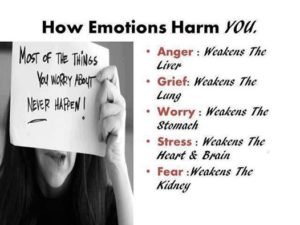

by Susan Dean | Feb 2, 2018 | Health, Kitchen Recipes, Medicinal Recipes
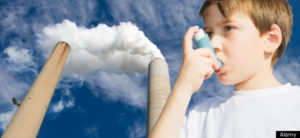
Tackling Asthma
This is a nationwide concern. The number of asthma cases in the U.S. has doubled since 1980, and now affects 1 in 10 children, according to the U.S. Centers for Disease Control and Prevention. One of the major underlying causes — emissions from coal-fired power plants, boilers and car tailpipes — continues to flow mostly unabated, even as the Environmental Protection Agency struggles to regulate the fossil fuel industry.
A close vote in the Senate halted an attempt to scale back rules unveiled by the EPA last year. These regulations would require industrial boiler and incinerator operators to install technology to reduce harmful air pollutants, such as mercury and soot; a requirement that opponents argue is very costly for businesses and risks the loss of more precious jobs and even plant closings.
“Any person who would say that the EPA should be eliminated or its ability to regulate reduced,” Brandt said, “should have to sit in the emergency room holding the hand of a child who can’t breathe.”
The EPA, under the lead of Lisa Jackson is continuing to work to implement an array of updated clean air standards along with new regulations needed to achieve those standards. The Mercury and Air Toxics Standards (MATS), issued in December, and the Cross-State Air Pollution Rule are now two of the most hotly debated components. Coal and oil companies rest their opposition primarily on the rules’ potential detriment to the economy. But if the new standards and rules hold, the EPA and environmental advocates maintain that the changes will significantly reduce the pollutants.
Overall, asthma is the number one chronic childhood disease, the leading reason for school absenteeism, and tops the list of causes for child hospitalizations and emergency room visits, according to the Asthma and Allergy Foundation of America. Not only do more children now have asthma, but these children are typically experiencing more attacks and those attacks are becoming more severe, even deadly. In 2007, 3,447 Americans died from asthma, according to the CDC.
Environmental factors, including chemicals found in pesticides and plastics, appear to play a role in the rising epidemic. But more to blame, many scientists say, are soot (fine particles), ozone and other air pollutants that are addressed by EPA’s pending legislation.
Evidence suggests that air pollution might not just trigger an asthma attack but could also increase the risk of developing the disease. This means that even if exposure to pollen, a cat or second-hand smoke makes a child cough and wheeze, pollution is often the root cause.
Some members of the fossil fuel industry and their supporters continue to stall stricter regulations with dozens of letters and lawsuits. Two weeks ago, Sen. Jim Inhofe (R-Okla.), an outspoken climate change skeptic, sent a letter to EPA’s Jackson that criticized a newly proposed greenhouse gas rule that would raise new automobile fuel economy requirements and cut carbon emissions from those vehicles in half by 2025. He noted that in addition to being a detriment to the nation’s energy security, the standards would add an average of $2,000 to the cost of new cars in 2016, and would actually increase soot pollution from vehicles because people would simply drive more.
According to EPA estimates, the rule would reduce overall soot emissions, but only if the resulting reductions in fuel refining and distribution are also factored in. When the improved gas mileage is taken into account, consumers would net a savings of $4,400 over the life of a new vehicle.
At a late February hearing, petitioners, including Massey Energy Co. and the state of Texas, also voiced their opposition to new standards that would regulate greenhouse gas emissions.
“The administration has long been talking about eliminating unnecessary regulations that could be harmful to the economy and job creation, and the greenhouse gas regulations should be at the top of that list,” said Carlton Carroll, spokesperson for the American Petroleum Institute, another one of the petitioners. “The last thing we need now are more burdensome and unnecessary regulations that will create a drag on business efforts to invest, expand and put people back to work.”
Among the clean air efforts under attack, the fate of the Cross-State Air Pollution Rule is of particular importance to many families in the Northeast; the measure would impose caps on sulfur dioxide and nitrogen oxide emissions that cross state lines. The so-called second-hand smog wafts in from the Midwest or Southeast and, upon arrival, can react with sunlight to form ground-level ozone and soot. The rule was temporarily stayed by a federal appeals court pending an April hearing on the rule.
“Big corporate polluters have been working these delays for two decades now,” said Peter Iwanowicz, director of the American Lung Association’s Healthy Air Campaign. “They are using the current economic crisis to push their agenda and blocking the EPA.”
After tallying up the average of four missed school days a year among asthmatics and five missed work days for their parents, as well as the medical costs and premature deaths, asthma cost the country $56 billion in 2007, according to the CDC.
The EPA estimates that MATS, the first national standards for reducing emissions of mercury and other toxic pollutants from power plants (which has already triggered the planned closing of old coal-fire plants in the Midwest) will prevent up to 11,000 premature deaths and 4,700 heart attacks each year by 2016, while also preventing 130,000 cases of childhood asthma symptoms.
In a December report, Columbia University public health researchers calculated the cost of implementing the new air quality regulations proposed or recently adopted by the EPA, including MATS, at about $195 billion over the next 20 years; the economic, environmental and health benefits amounted to over $1 trillion.
“The argument that the economy can’t handle regulation is fundamentally flawed,” said Brandt, who just published research that determined the annual cost associated with an asthma case in a pair of California cities to be 7 percent of the median household income, or about $4,000. “Our economy can’t handle sick people. To have a healthy economy, we have to have a healthy population.”
The targets of the new EPA rules are a source not only for pollutants that are related to asthma but that are also linked to global warming, and some of those pollutants are believed to contribute directly to both. So at the same time that the pollutants are causing attacks, they are also creating the conditions for things to get substantially worse for asthmatics.
Scientists warn that as the climate warms, spring begins earlier and ends later. The prolonged season is likely to bring more severe asthma through higher concentrations of pollen and other allergens, said Dr. Christopher Codispoti, an asthma expert at Rush University Medical Center in Chicago. And when temperatures rise, he added, so do ozone levels.
Overall, children with asthma are between two and six times more likely than non-sufferers to die from global warming-induced air pollution.
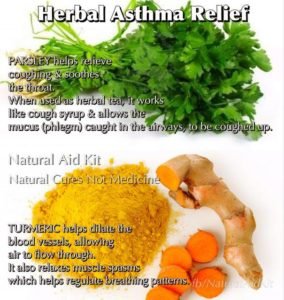


by Susan Dean | Feb 2, 2018 | Health, Kitchen Recipes, Medicinal Recipes

Fast food chains that have taken no steps to minimize antibiotic use. These failing chains include:
KFC
Dunkin Donuts
Sonic
Olive Garden
Denny’s
Starbucks
Jack in the Box
Burger King
Applebee’s
Domino’s Pizza
Chilis
Little Caesar’s
Buffalo Wild Wings
Dairy Queen
Arby’s
IHOP
Natural Antibiotics – With the overuse of antibiotic drugs, we now have superbugs resistant to antibiotics. Antibiotics can fight bacteria, fungi, and some parasites, but not viruses. Natural antibiotics can be divided into antibacterial and antifungal.
Natural Antibacterial: Used against E. Coli or Salmonella, H. pylori, ear infections, strep throat, or wound infections.
Apple Cider Vinegar
Ginger extract
Onion extract
Horseradish root
Habanera Peppers
Turmeric
Garlic extract
Raw Honey
Oregano Essential Oil
Natural Anti-Fungals: Used against Candida overgrowth, athlete’s foot, skin rashes or yeast infections.
Echinacea root extract
Apple Cider Vinegar
Ginger extract
Turmeric
Raw honey extract
These ingredients are usually available in supplement or tincture form. You can eat all of these whole foods on a daily basis to help with prevention.
Essential oils have been used for thousands of years as antibiotics. Why have they not lost their efficacy, whereas human-made antibiotics do so very quickly?
Many pharmaceutical antibiotics are isolated chemical constituents. They are one compound/one chemical – penicillin is penicillin; tetracycline is tetracycline and so on. This makes them easier for bacteria to adapt to and counteract.
In contrast, herbs are much more complicated. Garlic has over 33 sulfur compounds, 17 amino acids and a dozen other compounds. Yarrow has over 120 identified compounds. The different compounds work together, often to produce better than expected results.
Herbalism makes far more sense than the kind of medicine that is about isolating individual molecular components and patenting them for profit. Humans are for the most part afraid of nature and that’s a problem.
15 of the Best Natural Antibiotics
1. Cinnamon
2. Acacia
3. Aloe
4. Cryptolepsis
5. Echinacea
6. Eucalyptus
7. Garlic
8. Ginger
9. Goldenseal
10. Grapefruit Seed Extract
11. Honey
12. Juniper
13. Licorice
14. Sage
15. Usnea
16. Wormwood

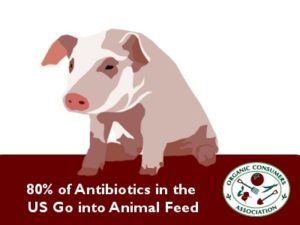

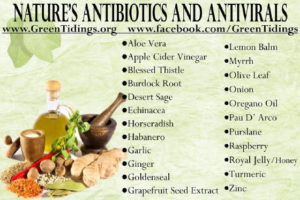
by Susan Dean | Feb 2, 2018 | Health, Kitchen Recipes, Medicinal Recipes
INFLAMATION IN THE BODY
The process by which the body regularly heals and detoxifies itself can also lead to life-threatening illnesses. The culprit: Inflammation. T Without it, stubbed toes and runny noses don’t heal; inflammation is the body’s natural healing ability—essentially removing the injury to allow for recovery—but it can also accumulate in the body in a chronic fashion, leading to serious illnesses such as arthritis, obesity, diabetes, cancer and heart disease.
Harvard Medical School research found that inflammation becomes chronic because of an imbalanced immune system. Mast cells are normal immune cells that in healthy individuals repair damaged cells. But in individuals with obesity and diabetes, mast cells accumulate in fat and can actually leak into tissue and start to cause serious damage.
Your diet and lifestyle choices can help you outsmart your body’s glitch mechanism and prevent—even reverse—the effects of chronic inflammation.
Reduce Inflammation Causing Foods
Red meat, dairy, processed foods, alcohol, and sugar are some of the leading causes of inflammation in the body due largely to the high incidence of Omega-6 fatty acids found in processed foods and animal products. While Omega-6 (like from hemp) is crucial for our health, too much can cause chronic inflammation.
Maximize Hydration
Water is important for every cell of our bodies, and it’s especially powerful in flushing out toxins and inflammation. Caffeinated beverages and alcohol can dehydrate leading to more inflammation.
Add Healthy Omega Fats
Essential fatty acids, like the Omega-3s found in hemp or flax oil, support the body’s anti-inflammatory response and reduce chronic inflammation. They can aid in pain management from chronic arthritis or acute injuries.
Getting Friendly with Bacteria
Cultures around the globe have eaten fermented or cultured foods since antiquity. The Standard American Diet has replaced these traditional foods for sugary, fatty, saltier versions that are often void of the necessary probiotics that protect and support the digestive system. Whether adding in cultured foods such as kimchee, sauerkrautor tempeh, or using a probiotic supplement, this can be a great aid in treating and preventing chronic inflammation.
Tapping the Power Plants
The plant kingdom is loaded with powerful healers, from plant enzymes in pineapple (bromelain) to turmeric (the seasoning in Indian food), which is loaded with curcuminoids—powerful anti-inflammatory compounds. Ginger is another powerful inflammation fighter that can be incorporated easily into your diet or taken as a supplement.
GOLDEN MILK TUMERIC TEA This lightly spiced drink is similar in flavor to chai and is packed with anti-inflammatory and antioxidant properties. Makes 2
- 1 cup unsweetened non-dairy coconut milk or almond milk
- 1 (3-inch) cinnamon stick
- 1 (1-inch) piece turmeric, unpeeled, thinly sliced, or 1/2 teaspoon dried turmeric
- 1 (1/2-inch) piece ginger, unpeeled, thinly sliced 1 tablespoon honey
- 1 tablespoon virgin coconut oil
- 1/4 teaspoon whole black peppercorns Ground cinnamon (for serving
Whisk coconut milk, cinnamon, turmeric, ginger, honey, coconut oil, peppercorns, and 1 cup water in a small saucepan; bring to a low boil. Reduce heat and simmer until flavors have melded, about 10 minutes. Strain through a fine-mesh sieve into mugs and top with a dash of cinnamon. Golden milk can be made 5 days ahead. Store in airtight container and chill. Warm before serving. Dried turmeric can be substituted when fresh is not available. Dried turmeric will settle to the bottom of the mug, so stir well before drinking.

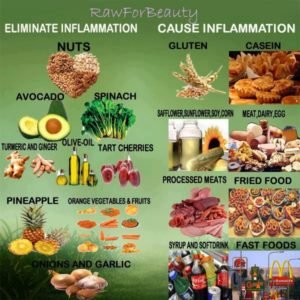
AntiInflammatoryFoodPyramid
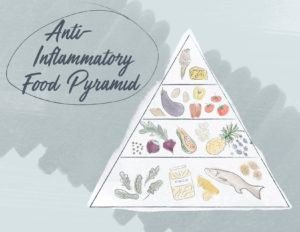
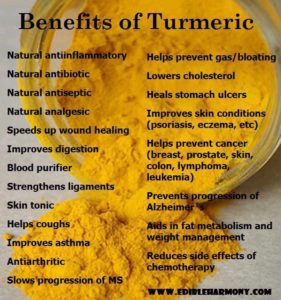
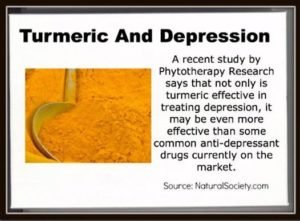
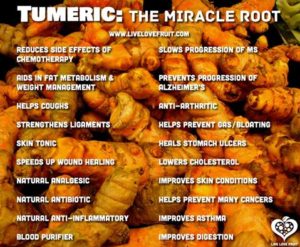
 These Foods Make Cancer Cells Grow in Your Body! Avoiding these foods will help you live healthier and longer.
These Foods Make Cancer Cells Grow in Your Body! Avoiding these foods will help you live healthier and longer.























